Sequel of the preceding post A Brief History of Space (2/4) : From Ptolemy to Galileo
At the beginning of XVIIth century, the way was open for new cosmologies, constructed on the basis of infinite space. Until then, the notion of space was conceived in the cosmological and physical order of nature, and not as the “background” of the figures and geometric constructions of Euclid. In other terms, physical space was not mathematicized. It became so thanks to René Descartes (1596 – 1650), who had the idea of specifying each point by three real numbers: its coordinates. The introduction of a universal system of coordinates which entirely criss-crossed space and allowed for the measurement of distances was a reflection of the fact that, for Descartes, the unification and uniformization of the universe in its physical content and its geometric laws was a given. Space is a substance in the same class as material bodies, an infinite ether agitated by vortices without number, at the centers of which were held the stars and their planetary systems.
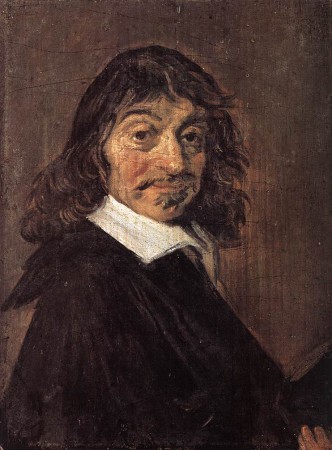
This new conception of the cosmos upset philosophical thought and led it far from the initial enthusiasm of the atomists and Giordano Bruno: “The absolute space which inspired the hexameters of Lucretius, the absolute space which that had been a liberation for Bruno, was a labyrinth and an abyss for Pascal.”[5] As for the scholars, they did not allow themselves to be discouraged by these moods and irresistibly moved towards the infinite universe.
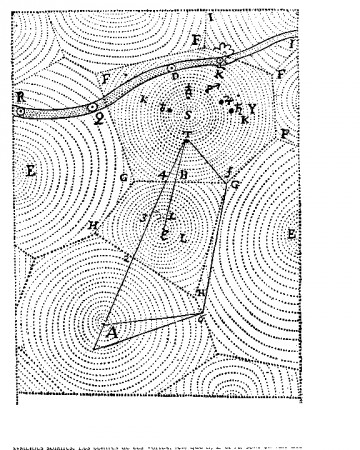
The tendency toward the radical geometrization of an infinite space, initiated by Descartes, was consummated by the Englishman Isaac Newton (1642-1727). Newton postulated an absolute space, encompassing not only the background space of mathematics and the physical space of astronomy, but also that of metaphysics, since space was the “sensorium of God.” Physical space, finally identified with geometrical space, was necessarily Euclidean (the only one known at the epoch), without curvature, amorphous and infinite in every direction. At the heart of this immobile framework, Newton explained celestial mechanics in terms of the law of universal attraction, from now on considered responsible for gravitation and the large scale structure of the Universe. With Newton, cosmology took root for more than two centuries in the framework of an infinite Euclidean space and an eternal time.
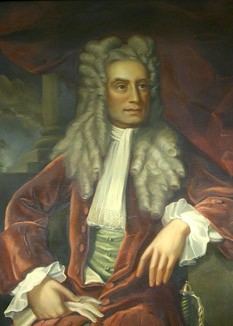
All the problems are not resolved in Newtonian cosmology, far from it. On the question of the distribution of stars in space, for example, Newton believed that they must occupy a finite volume since, he argued, if they occupied an infinite space, they would be infinite in number, the force of gravitation would be infinite, and the universe would be unstable. Newton moreover supposed that the stars were uniformly spread within a finite mass|like a galaxy, for example. But a problem of instability remained: since each celestial body is attracted by every other one, at the least movement, at the least mechanical perturbation, all the bodies in the universe would fall towards a unique center, and the universe would collapse. Newton’s universe is therefore only viable if it does not admit motion on the large scale: its space is rigid and its time immobile.

Gottfried Wilhelm von Leibniz (1646-1716) rebelled against precisely such a conception. Although he also believed that space was infinite, he was in profound disagreement with Newton on several points. For him, space had no absolute character: it was a system of pure relations between bodies, which therefore had no existence independent of the latter. Likewise, Leibniz thought that the stars were uniformly distributed within infinite space since, if this were not the case, there would be a sphere that encompassed all the stars; the physical Universe would therefore be bounded by this sphere and it would have a center, which, from the Copernican point of view (in virtue of which there must be no privileged position in the universe), is completely inadmissible.

Newton and Leibniz both attempted to prove the correctness of their point of view through reasoning by the absurd: if, by admitting a certain proposition, the conclusions that one draws are absurd, then the inverse proposition is true. The German philosopher Immanuel Kant (1724-1804), in turn, sought to establish his views of space on logic. He was a partisan (against Leibniz) of absolute, rather than substantial, space, and maintained that the intuition of space guaranteed the validity of Euclidean geometry. He also believed he had put an end to the debate on the finite or infinite character of space forever, by proving that it is impossible to construct without logical contradiction a finite universe as well as an infinite universe. He concluded from this that the question has no meaning and that it is discussed in vain!
The Kantian argument is faulty, for it relies on propositions coming from supposed “common sense,” for example, a finite character implies limits, infinity implies the absence of limits, etc. But common sense, whatever it may be, cannot help but be surprised on occasion. It is, after all, only an argument of authority for those ideas shared by the greatest number. However, “in science, the testimony of many has little more value than that of a few, since the number of people who reason well in complicated matters is much smaller than that of those who reason badly. »[6]
This humble reasoning on the nature of space was performed in the middle of the nineteenth century by a handful of bold geometers: Gauss, Bolyai, Lobachevsky, and Riemann discovered non-Euclidean geometries, which came to invalidate Kantian common sense.
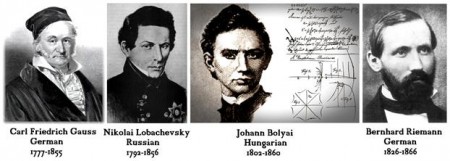
They showed that it was not common sense that guaranteed the validity of Euclidean geometry, but Euclid’s fifth postulate: starting from a point, one can trace one and only one straight line parallel to a given straight line which does not pass through this point. What would happen if one modified this postulate? Would one come across inconsistencies if one assumed for example that one could make an infinite number of parallels pass through this point (Lobachevsky space), or even none (Riemann space)? Absolutely not: the geometries built on these postulates are just as coherent as
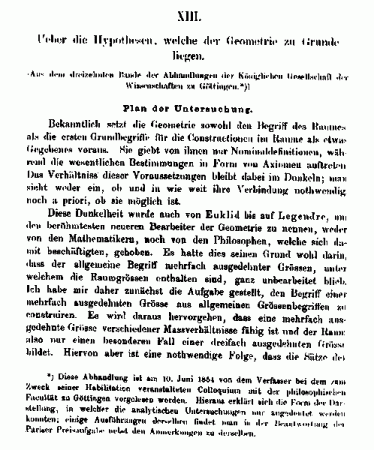
Euclidean geometry. From a purely logical point of view, the latter therefore loses its privileged place and becomes a very particular system among others. Notably, in 1854 Bernhard Riemann proved that a space that has no limit is not necessarily infinite. His demonstration was analogous to the arguments which allow one to show that the surface of the earth is curved and finite, although without limits. He gave the three-dimensional example of the hypersphere. Riemann did not content himself with reasoning on abstract spaces, he wanted to apply his discoveries to cosmology. He was the first to propose a model of the Universe that was finite but without frontier, described geometrically by a hypersphere. The edge paradox was finally resolved.
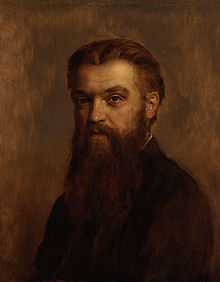
In 1870, the English mathematician William Clifford (1845-1879) wrote an article[7] in which he described the possibility of a variation in the curvature of space from one point to the other, which would be responsible for gravity and for the motion of matter; he suggested that some small regions of space are in fact of an analogous nature to small hills on the surface of the Earth, which is on average flat; or in other words that the laws of Euclidean geometry are not valid there. Clifford nevertheless failed at his attempt at the geometric modeling of gravitation, for he did not envisage the possible time variations of the curvature.
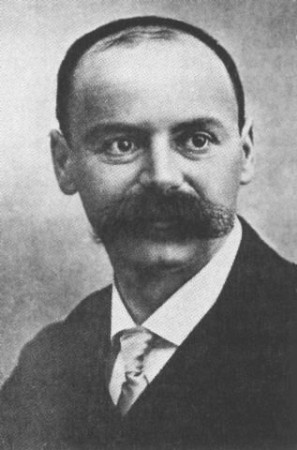
The German astrophysicist Karl Schwarzschild[8] (1873-1916) published a cosmology article in 1900 which passed unnoticed, but which with hindsight seems premonitory. His original mind made him one of the rare astronomers of his time who knew a sufficient amount of advanced mathematics to understand the subtleties of non-Euclidean geometries. Also, he naturally posed himself the question of knowing if real space could perhaps be curved. In particular, he sought, starting from observation, to find a lower bound on the radius of curvature of space (when this bound goes to infinity, space becomes Euclidean). At this time, the extragalactic nature of spiral nebula had not been demonstrated, and the currently assumed model on the general arrangement of the stars was that the number of all the visible stars was no more than 40 million, that they were all confined within a space of only a few million astronomical units of radius (the astronomical unit is the distance from the Earth to the Sun, or 150 million kilometers) and that external to this there was the void of an infinite Newtonian space. Thus, our galaxy, the Milky way, was considered as a unique island of matter lost in an unlimited ocean of void. Schwarzschild asked himself if this island might not occupy space in its entirety, with the condition that this was finite, small, and without frontier, just as Riemannian geometry offered the possibility. Estimating the average separation of the stars around the Sun and making the hypothesis that the Universe contained one hundred million stars, he found that the radius of space occupied by matter was at least a million astronomical units. This allowed him to fix a lower bound on the radius of curvature of space. He then concluded: “One may, without any contradiction with experiment, assume that the Universe is contained within a hyperbolic space with a radius of curvature greater than 4 million astronomical units, or in a finite elliptic space with a radius of curvature greater than 100 million astronomical units.”[9]
In a note at the end of the article, Schwarzschild pushed his reflections farther by suggesting that the topology of space could be nontrivial and could cause ghost images of the Milky Way.
**************
[5] Jorge Luis Borges, in Selected Non-Fictions, p. 353, Penguin (2000).
[6] Galileo, The Assayer (1623), transl. by Stillman Drake, in “Discoveries and Opinions of Galileo” p. 231-280, New York, Doubleday 1957).
[7] Clifford collected his ideas in Common Sense of the Exact Sciences, published posthumously in 1885. Republished by K. Pearson, Ayer Co. Pub., 1972.
[8] Who would distinguish himself in 1916 by discovering, in the trenches of the Russian front, the first exact solution to the equations of relativity, representing the space-time around a black hole.
[9] Karl Schwarzschild, Vierteljahrschrift d. Astronom. Gesellschaaft (1900), vol. 35, p.337; transl. by J. Stewart in Class. Quantum Grav. vol 15 (1998) p. 2539-2544.
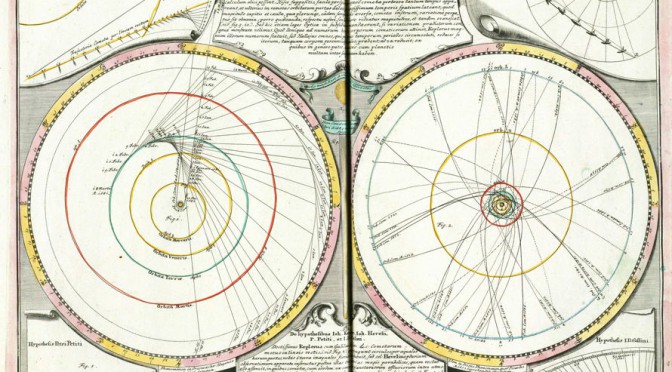
Very very interesting